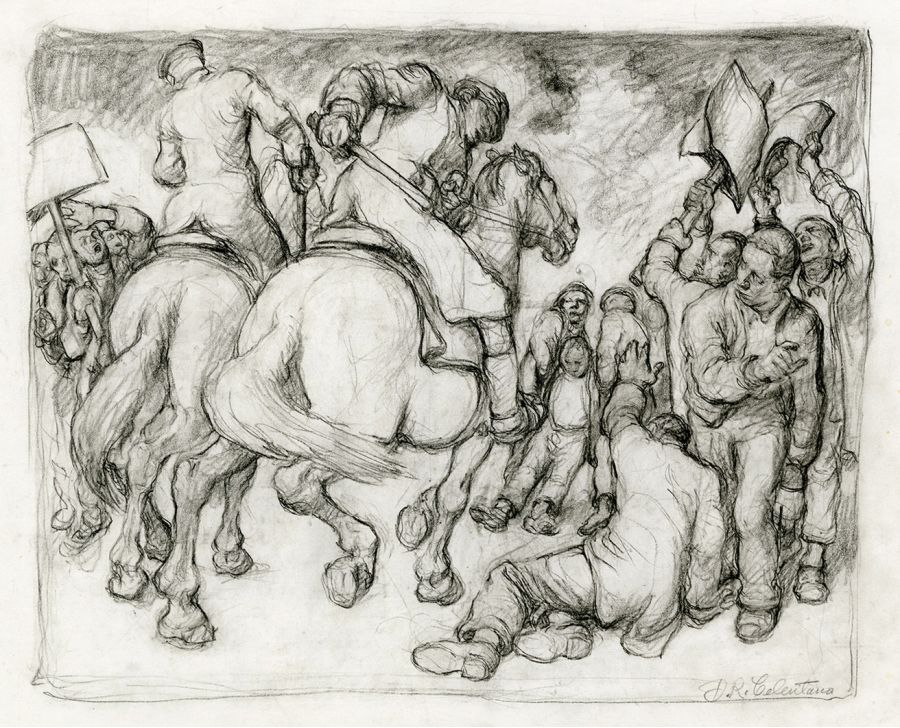Graphite on paper. Signed, lower right.
Image size 12 x 15 inches ( 305 x 381 mm); sheet size 14 7/8 x 18 1/2 inches (378 x 470 mm).
A fine social realist drawing, on cream wove paper, with margins (1 1.2 to 2 1/2 inches). Minor surface soiling in the margins, spot stains in the right margin (the nearest 1/4 inch from the image), slight rippling in the bottom margin, otherwise in good condition with the marginal defects not visible in the matted image.
The National Labor Relations Act (NLRA), often referred to as the Wagner Act, was passed by Congress on July 5, 1935. It established the right to organize unions. The Wagner Act was the most important labor law in American history and earned the nickname "labor's bill of rights". Before the law's passage, employers had the liberty to spy upon, question, punish, blacklist, and fire union members. In the 1930s, workers began to organize in large numbers. A great wave of work stoppages in 1933 and 1934 included citywide general strikes and factory occupations by workers. Hostile skirmishes erupted between workers bent on organizing unions, and the police and hired security squads backing the interests of factory owners who opposed unions.



